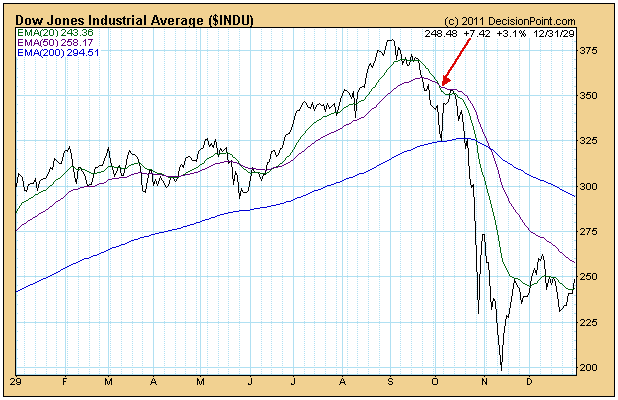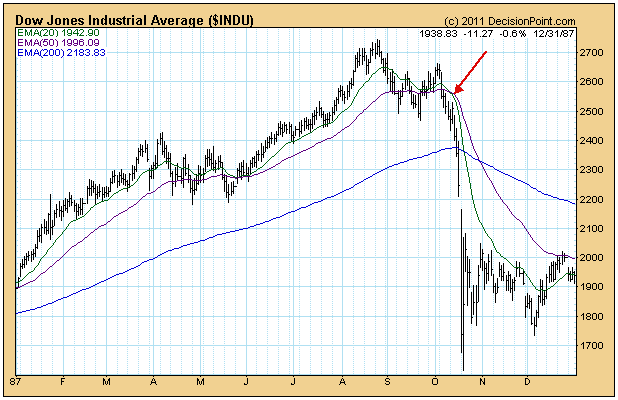(This is an excerpt from Friday's blog for Decision Point subscribers.)
My wife is something of an insomniac, so she listens to a lot of nighttime talk shows -- not the best cure for insomnia, I'll bet. Recently she told me about the comments of some guest on some talk show -- sorry, but that's as good as I can do for attribution -- who had an analogy for the U.S. financial woes. He said we are like a person who makes $50,000 a year, spends $75,000 a year, and has $375,000 in credit card debt. Hopeless is what it is.
From Mauldin and Tepper's Endgame: The End of the Debt Supercycle: There is a limit to how much debt you can pile on. As the work of Reinhart and Rogoff points out in This Time It's Different (2009), there is not a fixed [emphasis mine] limit for debt or some certain percentage of GDP where it all breaks down. Rather, the limit is all about confidence. Everything goes along well, and then "bang!" it doesn't.
"Confidence" has always been the keyword in financial markets. We get a daily diet of economic news with a determined spin about how the economy is gradually improving, but in the background the Fed and the politicians keep digging a deeper hole of debt. And the story is the same around the globe -- governments trying to exacerbate the threat of horrible levels of debt by piling on even more debt.
The real question is if the collapse really will be a "bang!" moment, of whether there will be some kind of advance warning upon which we can act. As a technical analyst I believe there will most likely be a gradual deterioration ahead of the "bang!", and we must assume that the deterioration has gone too far when the 20-EMA crosses down through the 50-EMA. To illustrate this point, let's look at two of the most catastrophic financial events in the last 100 years -- the 1929 Crash and the 1987 Crash.
The first chart is of the Dow Industrials in 1929. Note that the 20-EMA crossed down through the 50-EMA about two weeks ahead of the Crash. Some will complain about the two whipsaw signals earlier in the year, but this kind of activity characteristically precedes major tops and part of the cost of doing business if you want to avoid major declines. To mitigate the damage of these whipsaws, our timing model only generates a NEUTRAL signal (instead of a SELL) when the crossovers occur above the 200-EMA.
Next is the 1987 Crash. It is hard to see, but the 20/50-EMA crossover occurred four days ahead of the crash. Again, there was a short whipsaw earlier in the year.
Bottom Line: Catastrophic market events are usually a big surprise to most people, but they rarely take place without giving some advance technical warning signs. The moving average crossover has been a reliable, though by no means perfect, signal for impending trend changes. It is certainly one way we can attempt to be prepared ahead of the "bang!".








